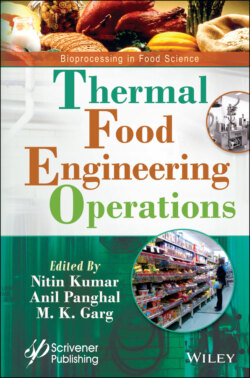Читать книгу Thermal Food Engineering Operations - NITIN KUMAR - Страница 31
1.4 Future Perspective of Novel Thermal Technologies
ОглавлениеMicrowave ovens are the most common heating techniques currently used in everyday life for reheating or preparing new meals. The advantages of the microwave for future application include time saver, volume heating, high product quality, and many others. The combination of the microwave with the conventional, infrared heating system may have the potential to build a completely new cooking system in future perspectives. Despite the high potential, a microwave is less common in industrial applications; maybe the reason behind this is the high energy cost, which can be balanced by the low research budget and quality of products formed.
The future utilization of RF heating is based on the consumer’s food preferences and need. The current increasing demand for hygienic and safe food will continue to increase demand for RF heating. Increasing the demand for pre-packaged food will result in the growth of RF heating technology. IR can be very useful for continuous baking, drying, and surface pasteurization. The utilization and application of IR in food industries are limited; equipment available for these techniques are not fully optimized and need more research and exploration. With the development of science and technology, the IR techniques might evolve and show their full potential. The ohmic heating has the promising way of providing food with produce high-grade value-added, safe, and better shelf-life products.
Ohmic heating can be efficiently utilized to heat high-acid food products, and for quick heating of liquid products. In future applications, ohmic heating technologies can be utilized in blanching, fermentation, evaporation, dehydration, and extraction. The considerable factors to note for future perspective in the future of ohmic heating are technologies are, considering different factors such as residence time, levels of loading, etc. Lack of temperature for locating a hot and cold spot and lack of models account for differences in electrical conductivity between solid and liquid phase, the response of two-phase with change in temperature [75].
